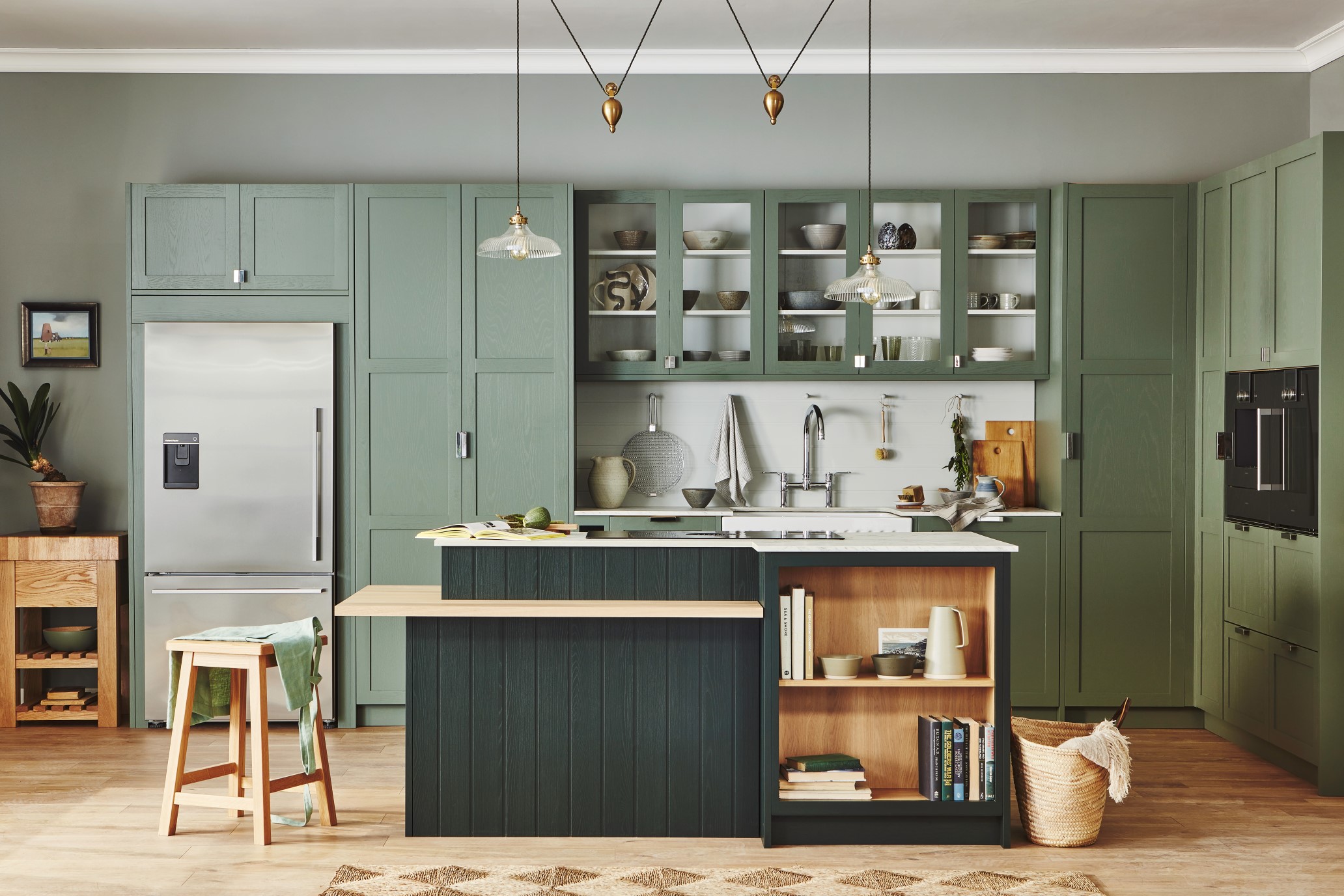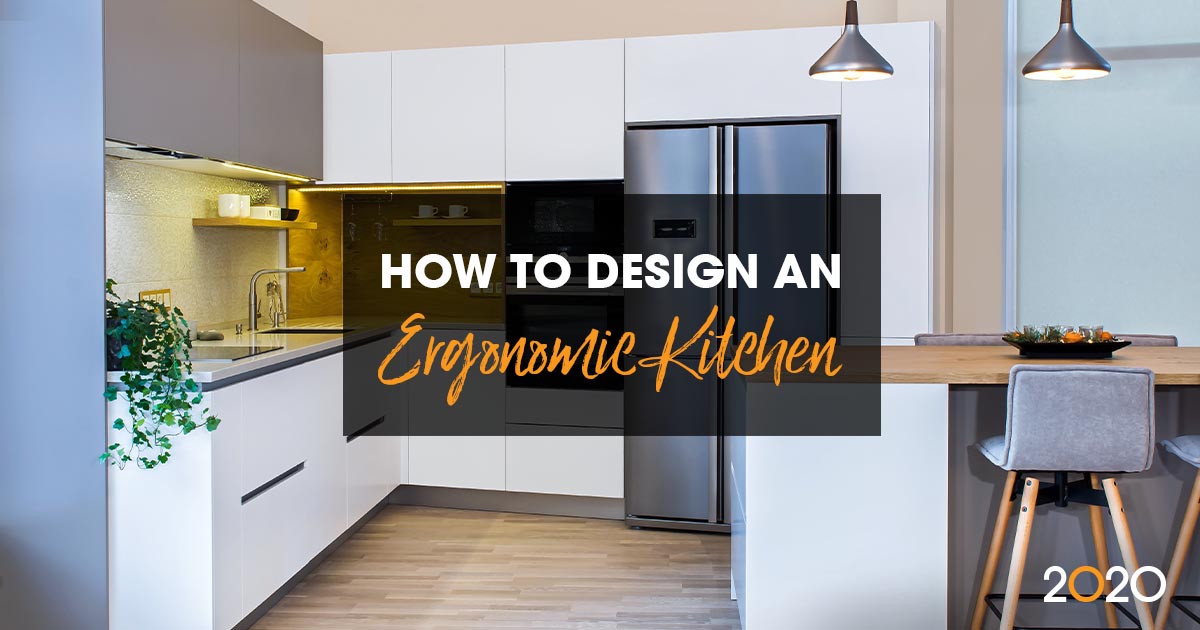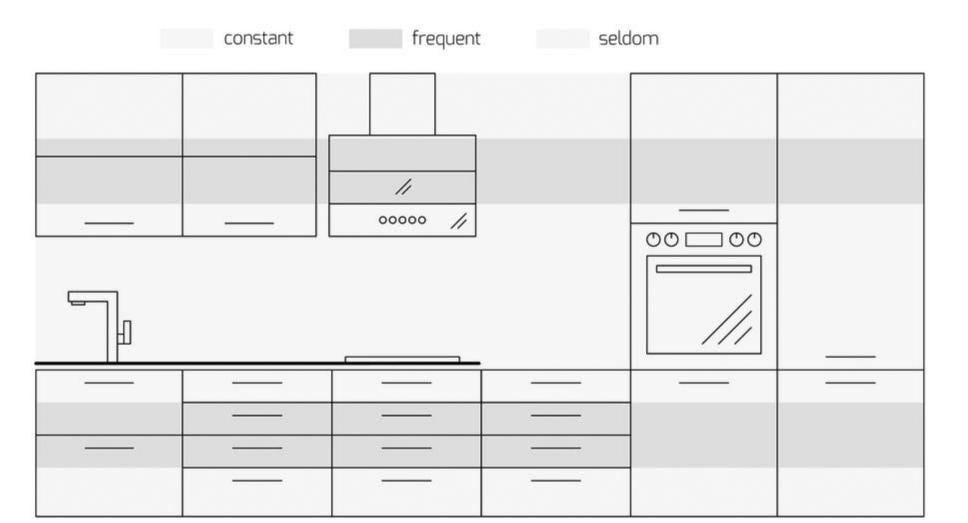Ergonomic kitchen design is essential for creating a functional and comfortable space. By prioritizing efficiency, safety, and comfort, an ergonomic kitchen can enhance your cooking experience and overall well-being.
A well-designed kitchen can make a significant difference in your daily life. With the right layout and features, you can improve your efficiency, reduce physical strain, and create a safer cooking environment. An ergonomic kitchen design takes into account the needs and habits of the user, ensuring that everything is easily accessible and within reach.
By optimizing the layout, storage, lighting, and appliances, an ergonomic kitchen can enhance your cooking experience and reduce the risk of injury. We will explore the key elements of an ergonomic kitchen design and how you can create a space that works best for you.
The Essence Of Ergonomic Kitchen Design
Ergonomic kitchen design is crucial for creating a comfortable and efficient cooking space. The balance between aesthetics and functionality is key in achieving an ergonomic kitchen. The principles of ergonomics in the kitchen revolve around optimizing the layout and organization to minimize strain and maximize usability.

Assessing Your Space
When designing an ergonomic kitchen, it is important to start by assessing your space. Begin by measuring for movement and flow, ensuring that there is enough space for easy navigation. Take into account user height and reach to create a comfortable and efficient layout. Consider the placement of key elements such as the sink, stove, and refrigerator to optimize accessibility. By carefully evaluating these factors, you can design a kitchen that promotes ease of use and minimizes strain on the body.
Selecting Ergonomic Appliances
Create a more comfortable and efficient kitchen with ergonomic appliances. Enhance your kitchen design by selecting appliances that prioritize user-friendly features, promoting better posture and reducing strain during everyday tasks. Improve your cooking experience with ergonomically designed appliances for a healthier and more enjoyable kitchen space.
When designing an ergonomic kitchen, it is crucial to carefully select appliances that prioritize comfort and efficiency. Look for innovative features that enhance usability and promote a healthy posture. Positioning the appliances for optimal use is also important to reduce strain on the body. Consider the following tips when choosing ergonomic appliances for your kitchen:
- Opt for appliances with adjustable heights and angles to accommodate different users and tasks.
- Choose appliances with easy-to-read displays and intuitive controls to minimize confusion and improve usability.
- Look for appliances with ample storage options and well-organized compartments to reduce bending and reaching.
- Consider appliances with built-in safety features such as automatic shut-off and child-lock mechanisms.
- Invest in energy-efficient appliances that not only save money but also contribute to a sustainable kitchen environment.
By carefully selecting ergonomic appliances with innovative features and positioning them correctly, you can create a kitchen that is both functional and comfortable to use, promoting a healthier and more enjoyable cooking experience.
Smart Storage Solutions
Ergonomic kitchen design incorporates smart storage solutions to optimize functionality and accessibility. One such solution is the use of accessible cabinet designs. These cabinets are designed to offer easy access to items stored within, ensuring convenience and efficiency in the kitchen.
Pull-out and pull-down systems are popular options for improving accessibility. Pull-out shelves allow for easy access to items at the back of the cabinet, eliminating the need to rummage through cluttered spaces. These shelves can be customized to fit specific kitchen items, making organization a breeze.
Pull-down systems are ideal for upper cabinets, especially for individuals with limited reach. These systems lower the contents of the cabinet to a comfortable height, allowing easy access without the need for step stools or excessive stretching.
By incorporating these smart storage solutions into the kitchen design, homeowners can create a functional and organized space that promotes efficiency and ease of use.
Countertops And Work Surfaces
| Countertops and Work Surfaces |
|
Choosing the right height and material for your countertops and work surfaces is crucial to ensuring your kitchen is ergonomic. The height of your work surfaces should be comfortable for you to work on without straining your back, shoulders, or arms. A good rule of thumb is to choose a height that allows your elbows to rest at a 90-degree angle when standing. When it comes to materials, there are a variety of options to choose from, including granite, quartz, laminate, and butcher block. Each material has its own benefits and drawbacks. Granite and quartz are durable and easy to clean, but can be expensive. Laminate is affordable and comes in a variety of colors and patterns, but can scratch and chip easily. Butcher block is a great choice for those who do a lot of cutting and chopping, but can require more maintenance. Incorporating multi-level surfaces can also help to create an ergonomic kitchen. This allows you to work at different heights, reducing strain on your body. For example, you could have a lower surface for prep work and a higher surface for cooking. |

Seating And Eating Areas
Create a comfortable and efficient kitchen with well-planned seating and eating areas. Incorporating ergonomic design principles ensures a seamless workflow and promotes healthy posture while preparing and enjoying meals. By optimizing the layout and choosing the right furniture, you can enhance the functionality and aesthetics of your kitchen space.
| Seating and Eating Areas | |
| Adjustable Seating Options | Integrating Comfortable Dining Solutions |
| Consider incorporating adjustable seating options in your kitchen. Adjustable barstools or chairs with adjustable height or backrest can provide comfort for people of different heights and ages. Additionally, consider adding cushions or padding to seats to reduce pressure points and discomfort during long meals. | Integrating comfortable dining solutions can make your kitchen a more inviting space for family and friends. Consider adding a dining table with comfortable chairs or benches that have backrests or padding. Adding soft lighting or a rug under the table can also create a cozy atmosphere. |
Lighting For Safety And Ambiance
Layered Lighting Techniques
Effective kitchen lighting is crucial for both safety and creating a pleasant ambiance. By implementing layered lighting techniques, you can achieve the perfect balance of functionality and aesthetics in your kitchen.
One important aspect of layered lighting is task lighting, which focuses on providing adequate illumination for critical areas. Task lighting ensures that you have sufficient light for activities such as food preparation, cooking, and cleaning.
Consider installing under-cabinet lights or pendant lights directly above the countertop to eliminate shadows and enhance visibility. LED lights are energy-efficient options that offer bright, focused lighting for your workspaces.
Incorporating dimmers allows you to adjust the intensity of the lighting to match your needs. This flexibility is particularly useful when transitioning between different activities throughout the day.
Remember, a well-lit kitchen not only enhances safety but also contributes to a welcoming and inviting atmosphere for you and your guests.
Enhancing Accessibility
Universal design features play a crucial role in achieving an ergonomic kitchen design. By incorporating these features, kitchens become more accessible to individuals of all ages and abilities. Some common universal design features include:
- Adjustable countertops and cabinets to accommodate varying heights and mobility levels
- Ample space for wheelchair users to maneuver easily
- Easy-to-reach storage solutions for frequently used items
- Non-slip flooring to prevent accidents
- Multiple lighting options for individuals with visual impairments
Moreover, technologies have emerged to aid user independence in the kitchen. Voice-activated assistants can control appliances and provide step-by-step instructions, making cooking more convenient for those with limited mobility. Smart appliances equipped with sensors and automation further enhance accessibility, allowing users to adjust settings with ease.
By integrating universal design features and utilizing assistive technologies, an ergonomic kitchen becomes a space that promotes inclusivity and independence.
Eco-friendly Ergonomic Design
Creating an ergonomic kitchen design involves using sustainable materials and products. This includes selecting renewable and recycled materials that are durable and have a low environmental impact. Energy-efficient kitchen practices play a key role in an eco-friendly ergonomic design. This can involve using energy-saving appliances and incorporating natural lighting and ventilation. Additionally, incorporating smart storage solutions and optimizing the layout of the kitchen can contribute to a more ergonomic and sustainable design.
Final Touches And Personal Flair
When putting the final touches on your kitchen design, it’s important to incorporate decorative elements that complement the overall style while still maintaining ergonomic choices. This can be achieved through the use of colorful accents, such as vibrant backsplashes or decorative tiles, to add a pop of personality to the space. Additionally, incorporating functional yet stylish storage solutions, such as open shelving or hanging pot racks, can further enhance the overall aesthetic while keeping everything within reach. Moreover, integrating personalized decor, such as artwork or unique kitchen accessories, can add a touch of individuality to the design. By carefully selecting these decorative elements, you can create a kitchen that is not only ergonomically efficient but also visually appealing.
Frequently Asked Questions
What Is Ergonomic Kitchen Design?
Ergonomic kitchen design refers to the arrangement of kitchen appliances, workspaces, and storage areas in a way that maximizes efficiency and minimizes physical strain on the user’s body. It takes into account factors such as height, reach, and movement patterns to create a functional and comfortable kitchen space.
How To Make A Kitchen Ergonomic?
To make a kitchen ergonomic, you need to consider the layout, appliances, and storage. Start by placing frequently used items within easy reach, minimize the need for bending and stretching, and ensure adequate lighting. Use adjustable shelves, pull-out drawers, and cabinets with soft-close mechanisms.
Finally, ensure there’s enough counter space for food prep and cooking.
What Is The Golden Rule For Kitchen Design?
The golden rule for kitchen design is to prioritize functionality, optimize space, incorporate quality materials, and maintain a cohesive aesthetic. It’s essential to balance aesthetics with practicality to create a harmonious and efficient kitchen space.
What Is The Most Comfortable And Efficient Kitchen Layout?
The most comfortable and efficient kitchen layout is the U-shaped design. It allows for easy movement and access to all areas of the kitchen, with everything within reach. The U-shaped layout also provides ample counter and storage space, making it ideal for cooking and preparing meals efficiently.
Conclusion
Incorporating ergonomic design principles into your kitchen can enhance comfort and efficiency. By prioritizing functionality and user-friendly features, you can create a space that promotes well-being and productivity. From adjustable countertops to accessible storage solutions, an ergonomic kitchen design can significantly improve your daily cooking experience.
Embrace these design concepts to transform your kitchen into a harmonious and ergonomic environment.

